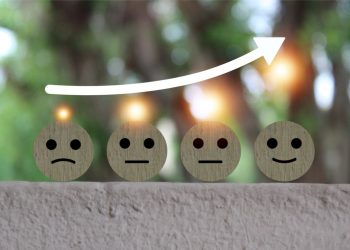 RISMEDIA, April 10, 2009-(MCT)-Wine-weary visitors to Northern California have a friend in Sonoma County. It’s not that wine isn’t important here – it surely is with more than 200 active wineries – but people don’t get into a lather over wine or the wine lifestyle like the folks next door in Napa. The county’s official website has a page that says it all: “Sonoma County is much more than wine.” Indeed it is.
RISMEDIA, April 10, 2009-(MCT)-Wine-weary visitors to Northern California have a friend in Sonoma County. It’s not that wine isn’t important here – it surely is with more than 200 active wineries – but people don’t get into a lather over wine or the wine lifestyle like the folks next door in Napa. The county’s official website has a page that says it all: “Sonoma County is much more than wine.” Indeed it is.
Sonoma County is 48 miles north of San Francisco, a straight shot up U.S. Highway 101, and is the perfect base for your wine break. From here, you can head west through the Russian River Valley to Pacific Coast beaches, north to the tony shops of Healdsburg, south to the historic old mission town of Sonoma and even east, to Calistoga in Napa Valley via the mountain-pass roads.
There’s a lot you can do in Sonoma County, from watching a drag race on Wednesday nights at the Infineon Raceway at Sears Point in Sonoma to ogling the animals at Safari West Wildlife Preserve outside Santa Rosa to touring the site of an old Russian colony at Ft. Ross State Historic Park to savoring the fresh foods at the Healdsburg Farmers Market.
If you find yourself headed to Northern California, here are three Sonoma must-do’s:
Charles M. Schulz Museum
Good grief! An entire museum dedicated to the man behind the Peanuts comic strip? Yes. And it’s great fun for all ages. Exhibits include a replica of Schulz’s studio, Snoopy’s doghouse wrapped by the artist Christo and even the nursery wall painted by Schulz in 1951. Perhaps the most striking aspect of the museum itself is a giant mural of Charlie Brown and a football-holding Lucy created by Japanese artist Yoshiteru Otani. The mural was fashioned out of 3,588 2-by-5-inch ceramic tiles emblazoned with 10 years’ worth of daily “Peanuts” comic strips.
Schulz lived in Santa Rosa until his death in 2000. The museum is in his old neighborhood, across the street from his famous hockey rink, the Redwood Empire Ice Arena, and its restaurant, the Warm Puppy Cafe.
The Schulz Museum is kid-friendly, but there is plenty of fodder here for older children and adults as well. The exhibits take a topical and sometimes off-beat approach to the Peanuts phenomenon. “Laughter is the best medicine,” for example, offers 70 comic strips in which Charlie Brown and his friends cope with broken limbs, nervous stomachs, lazy eye and dieting. Another special exhibit, “To the Moon: Snoopy Soars with NASA,” examines the history of Apollo 10 and the comic strip’s involvement in the May 1969 flight ’round the moon
Luther Burbank Home & Gardens
Lois Ruggero has to be a patient woman. The native of Oak Park, Ill., who moved west in the 1950s, works as a volunteer at the Luther Burbank Home & Gardens. “Luther who?” you might ask her. You wouldn’t be the first.
“A lot of people tell me they’ve never heard about him,” Ruggero says. “They don’t realize how famous he was. Ford and Edison came here to visit him.” And so they should have, if you ask me. The great automobile pioneer and the inventor of the electric light must stand aside for Burbank, the man who developed the potato used to make most of today’s french fries. This potato, known as the russet Burbank, was a mutation of the Burbank potato that the botanist had developed earlier. At the time, the russet Burbank was thought of as “a freak of nature.”
Inventing the french-fry potato would be enough for most men, but Burbank was renowned for so much more. Through cross-breeding, hybridization and grafting, he introduced scores of new plant varieties, including: Shasta daisies; the “plumcot,” a cross between the apricot and the plum; and spineless cacti.
Learn all about Burbank and his miracles of botany on a quick, 40-minute tour that moves from the visitors center and gift shop in the old carriage house through the gardens and on to Burbank’s greenhouse (designed and built by him in 1889, it survived the 1906 earthquake unscathed except for some bricks lost from the foundation) and his surprisingly modest home.
Sonoma Coast State Park
The beaches of Sonoma County are beautiful, wild, rugged and seemingly always deserted. The tiny coastal towns have their restaurants and coffee shops, but many visitors prefer to order a sandwich from a local deli and head out to the beachfront bluff to soak in the scene.
© 2009, Chicago Tribune.
Distributed by McClatchy-Tribune Information Services.










